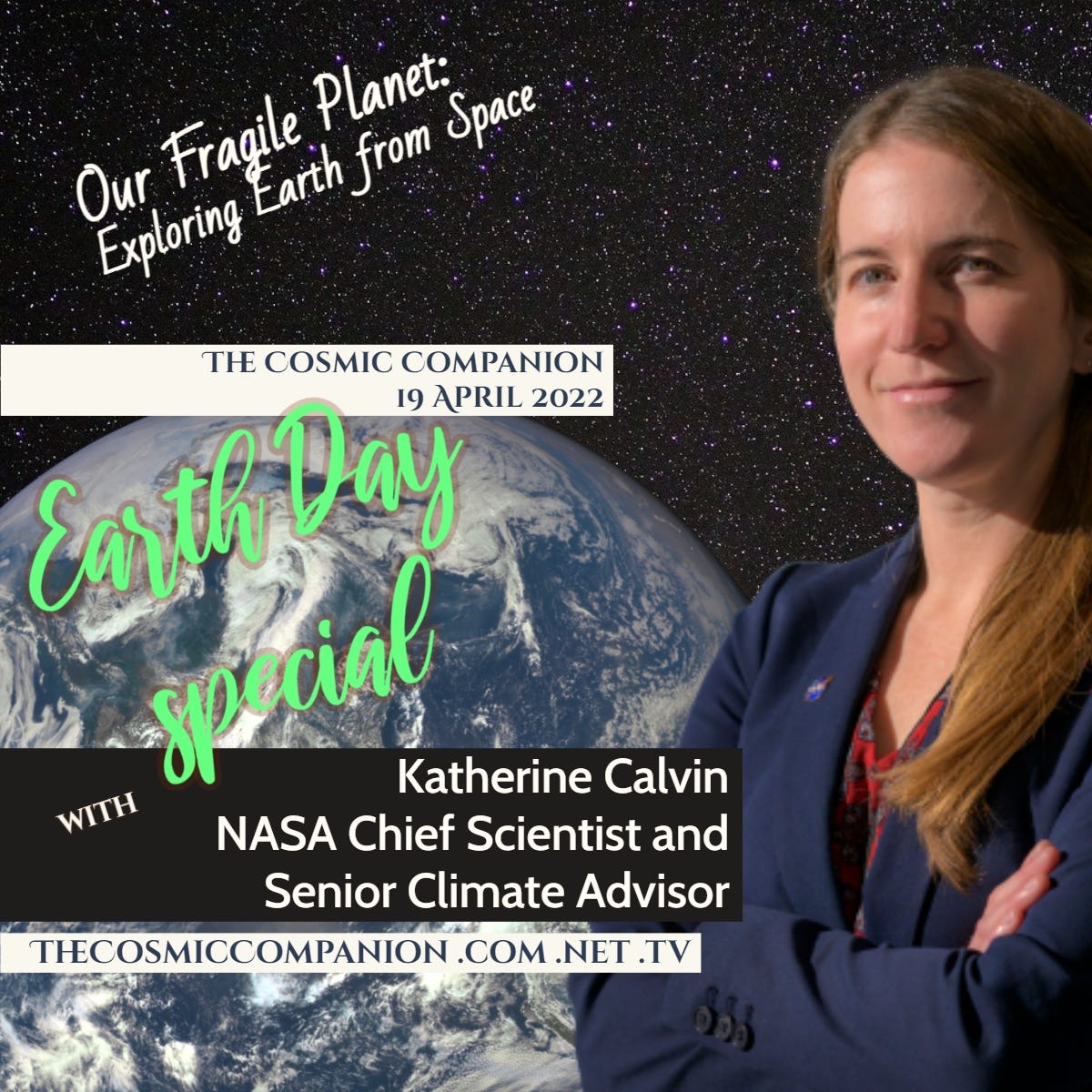The War in Ukraine could affect the International Space Station. Could SpaceX arrive in time to save humanity’s home away from home in space?
This week on The Cosmic Companion, we talk about the future of the International Space Station, as we explore this outpost of humanity in space.
We will talk with Homer Hickam — the self-made rocket designer who helped lead negotiations with the Russian government over their role on the ISS. We will talk about his role as the ISS took shape, and how the War in Ukraine might affect the orbiting outpost.
The International Space Station, the most complex machine yet created by the human race, has orbited our planet since 1998 (at least the first components). Since that time, humanity’s home away from home has hosted travelers from many nations (Hence the “I” in “ISS”).
VIP Subscribers receive full transcript below!
I haven’t done a new comic for a while, so here you go!
Next week: Intelligence: Earth and Beyond with Nat Geo’s David Liittschwager
Next week, we look at Intelligence: Earth and Beyond! We will talk with David Liittschwager, the photographer and author behind Octopus Seahorse Jellyfish - the stunning new National Geographic book describing the wonders of marine life.
We will talk about how we recognize intelligence in these marine animals and discuss what they might teach us about alien intelligence in the depths of space. Make sure to join us then!
Thanks again for subscribing!
Remember you can manage your subscriptions any time (VIP subscriptions are a good thing - go ahead and treat yourself!)
Clear skies!
James
VIP Subscriber Extras Below!
Transcript (cont.)
The space station is composed of large modules, and five of these are managed by the Russian government. The Progress re-supply ships provided by Roscosmos also provide an essential periodic boost to the ISS, keeping atmospheric drag from bringing the space station to a fiery death.
Both the United States and the Soviet Union launched space stations during the 1970s and 80s. The crown jewel for the American space program was SkyLab, which lifted off on 14 May 1973, just a few days before television coverage began showing the Senate investigation of the Watergate scandal.
Much like the Watergate break-in, Skylab encountered problems right from the start. During liftoff and deployment, one of the main solar panels was damaged, together with a shield designed to protect the vehicle from micrometeorites.
Occupied by a total of just nine people over a mere nine months, Skylab came crashing back to Earth in 11 July 1979.
Mir was the first modular space station, constructed in orbit by Roscosmos between 1986 and 1996. Experiments conducted aboard Mir include research into astronomy, physics, human biology, and more.
This outpost in orbit reentered the atmosphere on 23 March 2001, following more than 88,000 orbits of Earth.
On 20 November 1998, the first segment of the International Space Station — the Russian-built Zarya Control Module — lifted into orbit above the Earth. It was joined two weeks later by the first U.S.-designed component, the Unity Node 1.
This technological behemoth was slowly constructed piece-by-piece over 30 missions over 10 years. Twelve additional missions built up the ISS since that time. The first crew arrived on 2 November 2000, and humans have occupied the vehicle ever since.
The Europe Space Agency became part of the action in 2008, adding their Columbus Laboratory to the station, and Japan arrived soon after.
Today, the ISS is as large as a six-bedroom house —four times larger than Mir, and five times larger than Skylab. The ISS is the largest peacetime project ever developed by the human race.
The ISS National Laboratory is home to hundreds of experiments in space from government agencies, universities, and other organizations around the globe.
The war in Ukraine has led to calls from Moscow to cut back on essential services provided for the ISS by the Russian space agency. These sanctions could even include ending the availability of Progress ships to lift the ISS, potentially dooming the orbiting space station.
We talk with Homer Hickam about the possible future of the International Space Station, in light of the current war in Ukraine.
Over the last two decades, research conducted aboard the ISS delved into questions in astronomy, medicine, and biology, furthering the human drive to explore space.
Even prior to the Russian invasion of Ukraine, NASA and other participants in the program were considering what to do as the space station reaches the end of its operational life, which would come naturally around the year 2030. However, if Russia ends their missions to boost the station, the ISS could plummet to its demise sooner than expected.
On 24 February, Roscosmos Director Dmitry Rogozin tweeted out an admonition to the United States, pointing out that an uncontrolled re-entry of the ISS could land on the U.S., Europe, India, or China, but not Russia, asking how the west would keep it aloft. (The orbit of the ISS does not pass over most of the Russian territory).
Space developer Elon Musk responded, answering Rogozin’s question with a tweet of the SpaceX logo. NASA entered the fray, pointing out that “[n]o changes are planned” for operations aboard the space station.
Without orbital boosts, the ISS will fall to Earth. If this re-entry is uncontrolled, debris could, potentially, hit populated areas.
The haphazard re-entry of Skylab resulted in the debris scattered over large areas of Australia, including a massive oxygen tank which survived re-entry. The town of Esperance in Australia (population: 10,000 people), at the center of the debris field, fined NASA $400 for littering.
Currently, NASA plans to de-orbit the space station in 2031, allowing debris to fall into the Indian Ocean. Given the massive size of the International Space Station, large pieces of the vehicle are likely to survive the inferno from re-entry, crashing into the ocean. With any kind of luck, the fish there won’t fine NASA for littering.
Over the coming weeks and months, we could see some significant changes to the operations of the ISS and could learn more about the future of this first international outpost in space.
Coming Up 19 April: Earth Day Special!
Our Fragile Planet: Exploring Earth from Space - with Katherine Calvin Senior Climate Advisor at NASA
Thanks for being a VIP subscriber!
James






Share this post